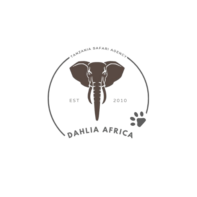Mount Kilimanjaro Climbing
Kilimanjaro Climbing offers an incredible opportunity to conquer Africa’s highest peak, experience stunning natural landscapes, and create lifelong memories. It is a challenging but rewarding adventure that attracts adventurers from all over the world.
Before embarking on a Kilimanjaro trekking, it is essential to understand the nature of the climb and how to prepare for it.
Located in Tanzania Northeast, Kilimanjaro is the highest mountain in Africa, the highest walkable mountain in the world and one of the ultimate outdoor challenges. We are one of the leading providers of high quality treks, with five to eight night options, exceptional summit success rates and an exemplary safety record.
"A Journey of Self Discovery"
We are brought to you adventure, self-discovery and an experience of a lifetime, We will take you to the summit of Mt. Kilimanjaro, the highest peak in Africa, with the world beneath your feet. It’s a moment of triumph that can leave you awestruck and speechless. Do not hesitant to embark on the journey, Dahlia Africa, will address all your concerns and guide you through everything you need to know about Kilimanjaro trekking.
More than just a physical feat, trekking Kilimanjaro is a journey of self-discovery. The summit might be the main goal, but the journey to get there is just as transformative. From picturesque landscapes to facing personal challenges, every step presents an opportunity for growth. So, if you’re ready to challenge yourself mentally and physically, and unlock a new level of self-awareness, join us on this epic adventure as we explore what Kilimanjaro trekking is all about.
Mount Kilimanjaro Climbing Routes
The Kilimanjaro Climbing and trekking tours can vary from 5 to 10 days, depending on the route chosen, and the climb requires a fair level of physical fitness as well as mental resilience. The type of equipment needed for the climb, such as proper hiking boots, clothing, headlamps, and sleeping bags, should also be taken into account.
The Kilimanjaro climbing requires patience, determination, and persistence, as the journey is not an easy one. One notable feature of the mountain is its diverse flora and fauna, as the mountain’s ascent typically takes climbers through different vegetation zones, climates, and wildlife habitats. The views from the summit of Kilimanjaro are breathtaking, where one can capture stunning panoramic views of Tanzania and Kenya, and even see the famous mount Meru and the plains of the Serengeti.
As stated “Kilimanjaro Trekking is not just about reaching the summit, but also about the journey of self-discovery. It’s about pushing your limits, facing your fears, and learning more about yourself than you ever thought possible.”

Kilimanjaro Trekking Marangu Route
The Marangu Route is one of the most popular routes for those who want to trek to the top of Mount Kilimanjaro. Also known as the “Coca-Cola Route,” it is the only route that offers hut accommodations and is considered the easiest route. However, this also means that it can be crowded during peak season.
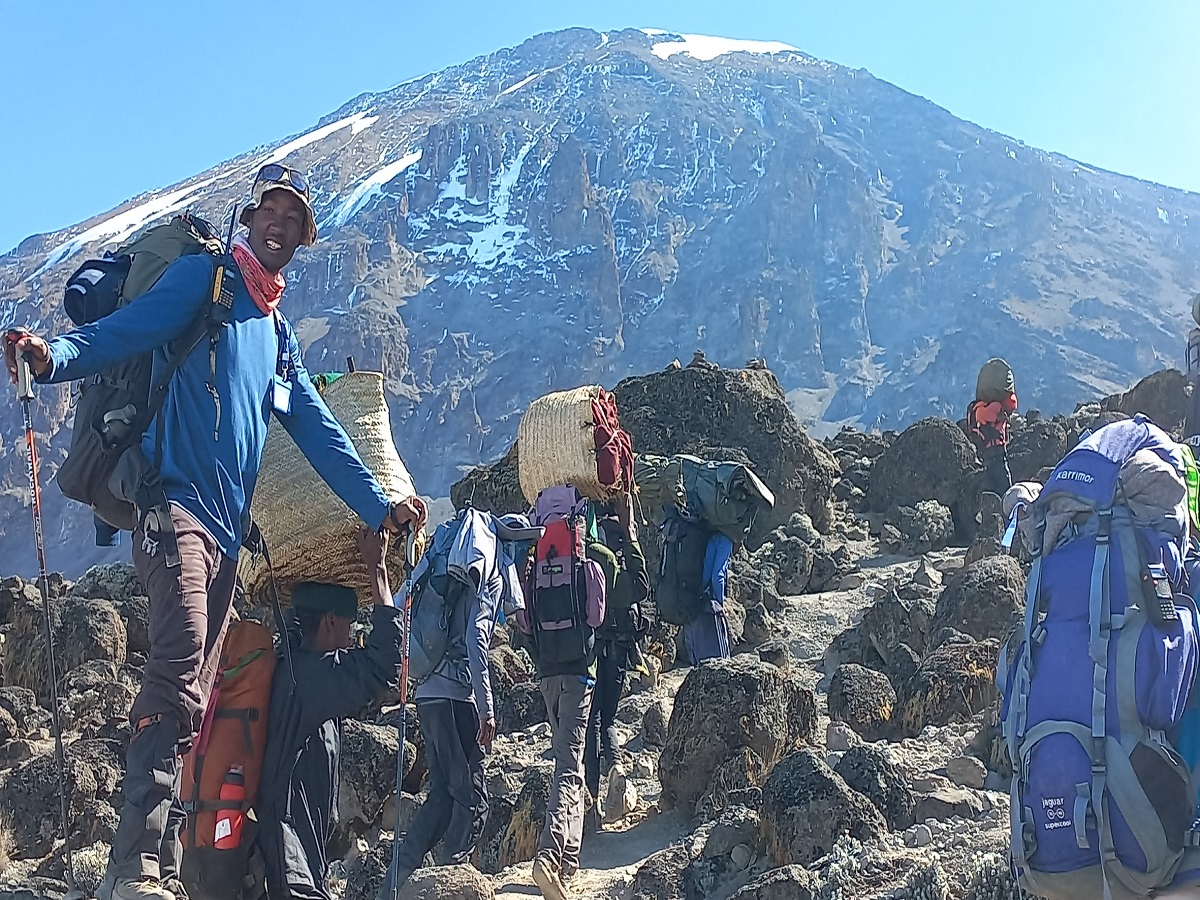
Kilimanjaro Trekking Machame Route
The Machame Route is also known as the “Whiskey Route” and is the most popular trekking route in Tanzania. It is a challenging route but is also considered the most scenic due to the panoramic views of the Shira Plateau and the Western Breach. With its rocky terrain, trekking poles are highly recommended.
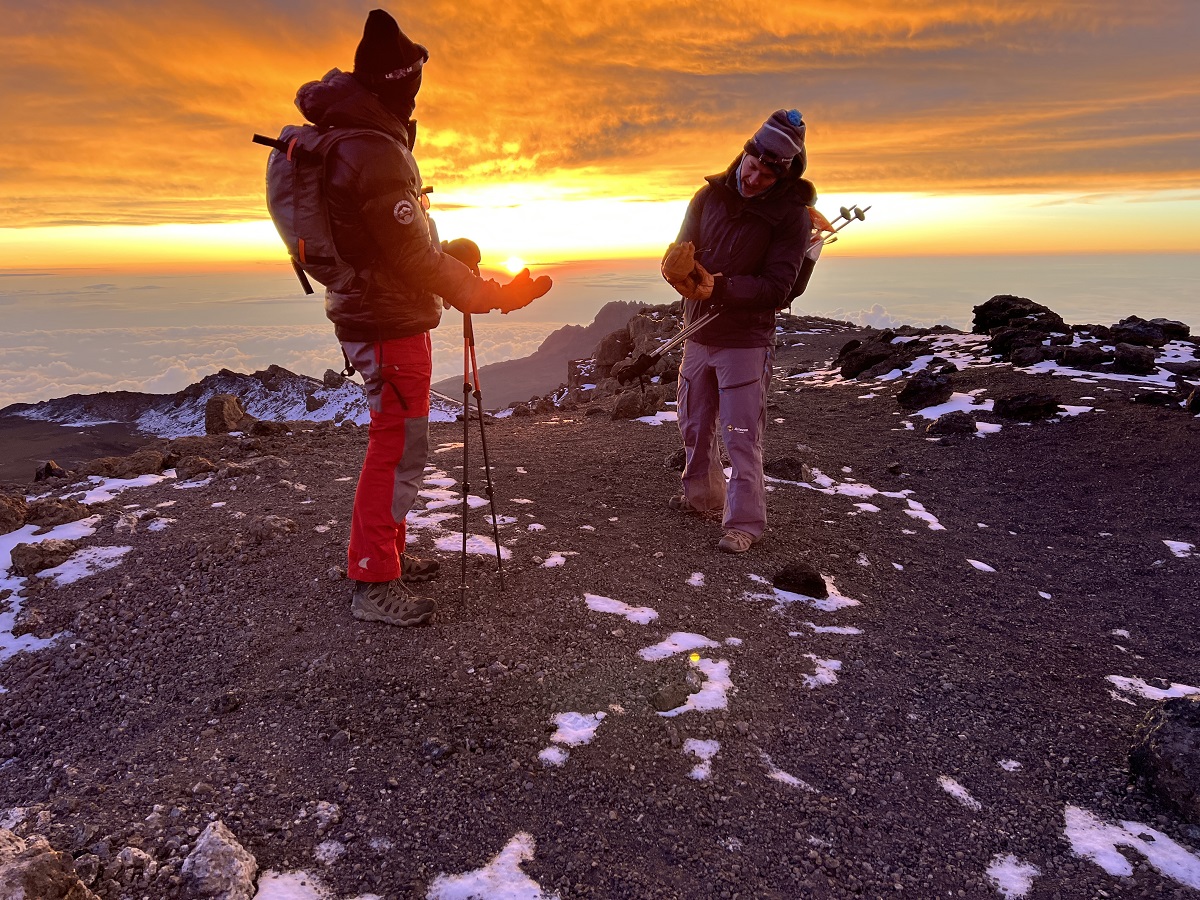
Kilimanjaro Trekking Lemosho Route
The Lemosho Route is a newer option and is quickly gaining popularity due to its beautiful scenery and lower traffic. It is a longer, helps for better acclimatization and a higher chance of summiting. It is considered the most beautiful route due to the stunning views of the Western Breach and the Shira Plateau.
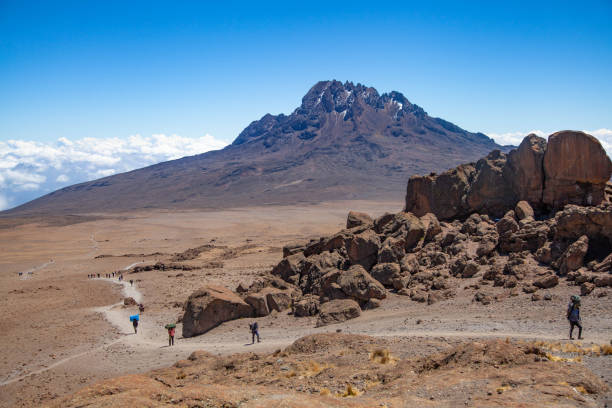
Kilimanjaro Trekking Shira Route
The Shira Plateau is one of the most scenic and most fascinating areas on Kilimanjaro. Depending on the weather conditions you can drive by 4 wheel drive vehicles to Shira Hut, the drive is very spectacular indeed and offers some magnificent views of Mt Meru and the Great Rift Valley in general.
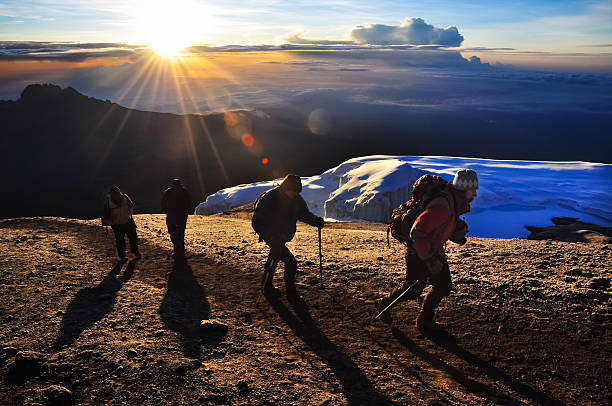
Kilimanjaro Trekking Northern Circuit Route
The Northern Circuit route is one of the best routes on Kilimanjaro, offering nearly 360 degrees of beautiful scenery including the quiet, rarely visited northern slopes. As the longest route on Kilimanjaro, the Northern Circuit also has the most acclimatization time and the highest summit success rate.

Kilimanjaro Trekking Rongai Route
Rongai is a moderately difficult route, and is highly recommended, especially for those with less backpacking experience. Although the scenery is not as varied as the western routes, Rongai makes up for this by passing through true wilderness areas for nearly the entire way.
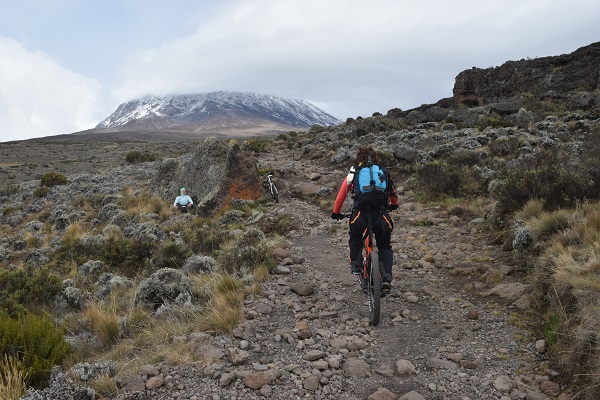
Kilimanjaro Kilema Route for Bicycling Summit
The adventure that combines the thrill of extreme sports with the breathtaking beauty of nature. Kilema route is the only route that allows to summit Kilimanjaro by MTB.The satisfaction of reaching the top, the beauty of the scenery, and of course, the thrill of the descent, makes for an unforgettable experience.
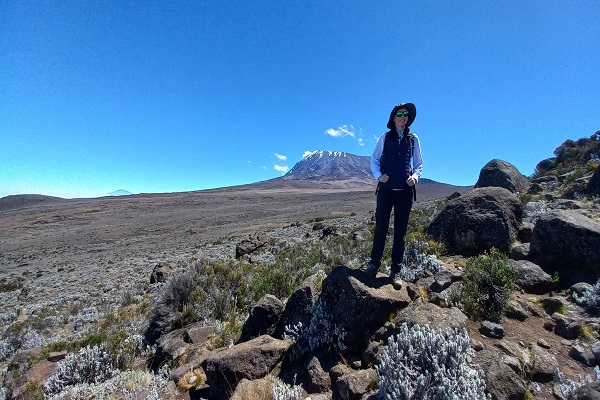
Kilimanjaro Trekking Umbwe Route
Kilimanjaro Umbwe Route, the toughest route to the summit of Kilimanjaro, it’s referred to as the “technical climb,” with steep inclines and narrow ridges that require a lot of skill to navigate. Moreover, the altitude gradually increases, making it challenging for your body to acclimatize.

The second highest volcanic mountain in Tanzania and is the fifth-highest mountain of Africa, is often overlooked in favor of its neighboring , Kilimanjaro. However, this lesser-known destination offers a thrilling and challenging trek that is perfect for adventure seekers and nature enthusiasts alike.
Mount Kilimanjaro Climbing FAQ's
In short, Kilimanjaro trekking can be done all year round. Climbs during the dry season are, however, more comfortable. The dry season spans the periods from the second half of from December till March and from June till November.
At the same time, a the rainy season has some advantages as well.
Kilimanjaro Trekking Month to Month Guide
April-May
The “big” rainy season starts at the end of March and continues until the middle of May. April marks the beginning of the coldest time of the year in Tanzania. These months have significantly less climbers than the rest of the year, but there is a high chance of hiking in the rain at this time of the year.
June-July
The frequency of rain gradually decreases. The weather on Kilimanjaro is fairly dry and clear in these months, but nights are still cold. June is usually quiet, sunny, and, in our opinion, much underrated in terms of climbing. It is an excellent idea to choose June for your adventure because of great weather and routes that are almost private to your climbing party. The number of climbers increases as the year progresses. Starting from July the majority of the routes will be quite busy.
The peak climbing season on Kilimanjaro is from August to September. The weather is particularly good for climbing: the days are clear and somewhat warmer than in June/July. At the same time, it may be cloudy in the forest/moorland zone, as well as it may be rainy on the southern routes (Machame and Umbwe). However, once you leave the rain forest behind, it will be sunny.
October is another unfairly ignored season: nice weather conditions last into mid-October and the number of climbers drops dramatically, giving you a good chance to enjoy Kilimanjaro treks almost alone. At the end of October, the weather becomes more changeable. As long as you are equipped to withstand the occasional rain shower, this should not present any major challenges.
November is the “small” rainy season. The rainy weather may last into mid-December. The temperatures will have dropped and mist covers the Mountain, making your climb slightly tricky and risky, yet more challenging and exciting. November might not be the best pick in terms of weather, but gives a great opportunity to enjoy the breathtaking views of misty-covered Mount Kilimanjaro with its snow-capped peak and to take some terrific pictures.
December – January – Christmas and New Years are the second busiest climbing season on Kilimanjaro. The traffic is extremely high, although there is a good chance of rain and thick clouds at the lower altitudes of Kilimanjaro.
Mid-January to mid-March are very popular among climbers. The weather is perfectly balanced: it is neither too cold, nor too wet. The days are generally dry, though occasional rains may happen. The possibility of rain increases in the second half of March because the season of the “big rains” is approaching.
Many different factors affect the climbing prices. A Kilimanjaro climb can cost from $1,400 (standard) to over $5,000 (luxury package) and above. Blend this knowledge with the fact that there are 250 licensed and hundreds of unlicensed operators in the region and making the right choice becomes a major task. In fact, to understand how the climbing Mt. Kilimanjaro cost is formed many different factors should be taken into consideration.
Trekking Kilimanjaro Price Components
The price of a Kilimanjaro climb is made up of two kinds of costs: fixed, (i.e. park fees per person), and variable, i.e. (transfers and equipment), which are shared between all members of the group and, up to a certain point, lower as the number of climbers grows.
Unless you take the risk of opting for the lowest of offers, slighting most if not all of safety and comfort features that are normally available, the final price of your trek shall include the costs of the following:
Kilimanjaro National Park Fees
Every Mount Kilimanjaro climber is required to pay park fees, which inholds conservation, camping, rescue and crew fees. On Lemosho and Rongai routes special forest fees are also applicable. It is another key element of Mt Kilimanjaro climb cost.
Total Park Fees, depending on route and number of days, will amount to between US$800 and 1,100 (all calculations and prices henceforth are given in USD).
Kilimanjaro Climbing Crew Wages
Crew wages are the next important component of Kilimanjaro climbing cost. While the rates paid (and charged to the client) may vary, all reputable Tanzanian trekking outfitters have wage systems for their climbing crews. A guide usually receives USD 20-40 per day, a cook – USD 10-15, a porter – USD 7-10, adding to the total cost to climb Mt Kilimanjaro. The final total will therefore hinge upon the size of the crew necessary to serve the total number of climbers and attain a satisfactory level of comfort expected on the climb. Tips, determined by the client’s experience while trekking, are also appreciated.
Camping Equipment Costs
A typical climbing package will also include such equipment as sleeping bags and mess tents; cookers and kitchenware; tables and other essential items. As reliable gear means not only comfort but also safety, equipment should be renewed on a regular basis and must be thoroughly cleaned after each climb. Operators must consider how to replace or repair equipment for future treks and pay staff to properly clean items such as sleeping bags and tents.
Average amortization costs are: $50/climber.
Taxes and Licenses
All Tanzanian businesses are subject to a variety of taxes. Licensed tour operators also pay for a number of licenses on a yearly basis. This ensures they are legally permitted to operate in Tanzania, and under the authority of the Tanzanian government. Choosing licensed tour operators for your travels means they are responsible to the government, and if you have any issues, safety problems (or your deposit goes missing) they will have to answer to higher authorities. Visitors choosing licensed operators receive consistently excellent service, in part because the operator has made investments and is abiding by the government rules. Unlicensed operators, on the other hand, are invisible to the Tanzanian government and are not legally allowed to offer tourism (including mountain climbing) services. If an unlicensed operator is already willing to break the law to provide climbing expeditions, they are likely to make many more dangerous risks with clients, all in order to make a higher profit.
Estimated taxes: $60/climber.
Climbing Comfort
Long days of trekking and climbing a mountain present physical challenges, even to the most active adventurers. Having sufficient and comfortable rests are imperative to a successful summit. If you are physically fit, but haven’t had a good sleep in three nights, you are risking your entire experience on Kilimanjaro.
Sleeping bags, a specifically-designed meal plan that includes re-supplies of fresh ingredients, satellite phones, oxygen for emergencies, etc. are all part of a successful climb, and raise your Kilimanjaro trek cost. However, consider that this extra comfort could mean all the difference in the success of your climb.
The cost of these additional features averages at: $50/climber.
Safety
Though climbing Kilimanjaro does not call for any specialized training or skills, mountaineering is an inherently dangerous activity. HAPE and HACE (High Altitude Pulmonary and Cerebral Edema respectively) should never be discounted.
Responsible Kilimanjaro climbing operators always keep safety in mind, and have safety measures in place that sometimes cause a slight increase in the overall Kilimanjaro climbing cost.
For example, we at Dahlia Africa Travel conduct safety workshops for our guides every four months. Each of our guides is expected to pass the Wilderness First Responder/First Aid test. The costs of training for all of our staff are covered by Dahlia Africa and it means that every Dahlia Africa guide on Kilimanjaro is not only Wilderness First Responder Certified, but is up-to-date in their training, for the assurance and safety of all of our clients
Every expedition organized by Dahlia Africa is supplied with emergency oxygen, oximeter and tonometer. Guides conduct medical checks twice a day on each climber to ensure their health and afety, especially as the team climbs to higher altitudes. In an emergency, a client shall be transported from Kilimanjaro to a hospital at no extra charge.
Estimated costs of climbing safety add-ons: $40/climber.
Accommodation Before and After a Kilimanjaro Climb
Most Kilimanjaro hiking packages include accommodation before and after the climb. Top-quality hotels in Tanzania are quite expensive: a night in a reasonable 3-star hotel in Moshi will cost $100-120 if booked directly or $80-90 if included in your climbing package. Therefore, accommodation will heighten the cost of your Kilimanjaro trip from the onset, but ultimately save you money than if you were to book independently..
Estimated costs of accommodation before and after the climb: $160
Operator’s Service Charge
Commissions added by Tanzanian tour operators to the Kilimanjaro climb cost generally fall within the 15-20% range.
Estimated average commission of a tour operator – 15-20%.
There are several routes to get the summit.
Those seeking seclusion, scenic value and good acclimatization transition should consider Lemosho or Northern Traverse. A pocket-friendly and picturesque Machame provides good acclimatization transition, though it is a bit crowded during the high season.
Due to a popular misconception of being the easiest, Marangu route is the most popular and cheapest option. It is the only route providing hut accommodation (all other routes are camping only), which are handy during the rainy season. Marangu, however, features poor acclimatization and scenic value, as the trail is used for ascent and descent.
Rongai is one of the least crowded and the only route approaching the Mount from the North. It is a physically challenging option and is ideal for those who value remoteness. This route is recommended during the rainy seasons (Northern side of the Mountain protects the climbers from precipitation).
Umbwe route is the for the real adventurers. The steepest and shortest option, Umbwe is a challenging test of your endurance, stamina and determination. The route offers unique panoramic sceneries. The cost of that is, however, the weakest acclimatization transition.
In order to be safe and comfortable throughout your Mount Kilimanjaro climb, you’ll need to bring important gear and supplies with you. We have put together a comprehensive Kilimanjaro Packing list to help you prepare for your climb.
We provide tents, the camp equipment, food, cooking facilities, and other shared items. You’ll have a duffel bag with all your kit, carried by the porters; and carry your own daypack during the trekking day.
Here is a quick list of all the gear that you need to pack for your Kilimanjaro trek. We’ve included links to our personal recommendations.
Clothing:
- 4-5 Pairs of underwear
- Top and bottom base layer – Icebreaker (Women) or SmartWool (Men)
- 3-4 Short sleeve and 1-2 long sleeve trekking shirts
- 1-2 Pairs of hiking trousers
- 1 Fleece jacket – Helly Hansen (Men) or The North Face (Women)
- 1 Insulated winter jacket – Arc’Teryx Atom (Men) or North Face Nuptse (Women)
- 1 Insulated trekking trousers
- 1 Hardshell jacket – North Face Resolve Resolve (Men) and North Face Venture 2 (Women)
- Lightweight raingear
Headgear:
- Sun hat, ideally with a neck cover
- Warm beanie or fleece headband
- Bandana or neck gaiter
- Headlamp – PETZL Tikka
- Sunglasses
Hands and Walking:
- Lightweight inner gloves – New Balance Lightweight Gloves
- Warm outer gloves/mitts – Gore-Tex Gloves (Men) or Black Diamond Mercury Mitts (Women)
- Adjustable trekking poles – Black Diamond Alpine
Footwear:
- Mid-weight hiking boots – Salomon Quest (Women) or KEEN Targhee (Men)
- Camp trainers (Men) / Trekking sandals (Women)
- 4-5 Pairs of trekking socks – SmartWool or Bridgedale
- 1 Pair of warm/thick trekking socks
- Bags and Daypack (click for details)
- 80-90L Waterproof duffle bag – North Face Base Camp
- 20-30L Daypack – Osprey Talon 22
- Daypack raincover
- Travel bag organisers (optional)
Sleeping Accessories:
- 4-Season sleeping bag – Marmot Trestles or Hyke & Byke Unisex
- Insulated sleeping mat
- Inflatable pillow (optional)
General Accessories:
- Large volume water bottle or hydration bladder – Platypus Hydration Bladder for backpack
- Water Purification Tablets
- Baby wipes
- Sweat-resistant suncream
- Blister plasters
- Insect repellant
- General medications (Paracetamol, Imodium)
- Pee bottle (optional)
Technology:
- Camera
- GoPro (optional)
- Solar Backpack Charger (optional)
- Spare batteries and camera memory card
- Kindle with backlight (optional)
Other Bits and Bobs
- Energy bars
- Energy drink supplement
- Ziplock bags for important possessions (passport, money, phone, etc.)
- Trekking towel
- Toiletries, including one roll of toilet paper
- Passport, visa, insurance, yellow fever card (if applicable)
- Small lock for your duffle bag.
As you make plans for Kilimanjaro, you will likely see or hear the phrase “high-altitude acclimatization” frequently. To be brief, high-altitude acclimatization refers to physical changes that occur in your body so that you feel better and your body can function well at increased altitudes.
A logical question is why do some climbers experience feeling poorly, physically, as they ascend into higher altitudes?
The thing is that the higher we go, the lower the atmospheric pressure becomes. As a result, the distance between oxygen molecules in the air we breathe spreads – there is not enough pressure to “hold” them together. As a result, with each breath, our body receives less oxygen than at the altitudes with which we are accustomed.
Oxygen is necessary for the proper functioning of the circulatory system, the brain and other life-sustaining functions.
If you reside at sea level, your body is accustomed to a certain concentration of oxygen. As you ascend Mt Kilimanjaro, the concentration of oxygen available gradually reduces until it is about 40% less than sea level at the final summit.
Note: The proportion of oxygen in the atmosphere as a whole (approximately 20%) is unchanged, whether at sea level or Kilimanjaro. This proportion is the combination of oxygen, nitrogen and carbon dioxide that make up our atmosphere.
Feeling a lack of oxygen, the body begins to actively adapt to new conditions. There are many physiological changes, of which the most significant are:
- the respiration rate increases. Our body tries to compensate for less oxygen in each breath by taking more frequent breaths, so that the total number of molecules received is approximately the same as your body is used to.
- the parts of the lungs that are usually “conserved” begin to turn on – our body has reserved them for such situations.
- the body begins to produce special enzymes that “squeeze” oxygen from the received hemoglobin and send it to the circulatory system, partially replenishing the supply.
- the number of red blood cells in our blood increases significantly. This allows available oxygen molecules to be delivered to vital organs at a faster rate.
This is how our body tries to bring the oxygen level back to the level we need. During daily medical examinations, our guides will measure your oxygen with a special device – an oximeter. Blood oxygen levels help our team understand how well your acclimatization is.
For all those climbing with us and with other tour operators, we have prepared the following insider tips:
- It is not about your level of fitness only. Determination, motivation and well-planned acclimatization transition are more important.
- Do not save up on your personal equipment. Branded high-quality clothes and sleeping bags often have decisive impact on successfulness of your climb. All personal equipment is available for rent in our office.
- Be ready to have no shower for a week or so. Portable showers are, however, available for extra fee.
- Public toilets may be uncomfortable, especially for the ladies. Thus, renting a portable toilet makes sense.
- Taking an mp3 player or an Ipod is a good idea. Enjoy the sceneries on the way and better preserve battery for the summit rush.
Get In Touch
Its never too soon or too late to get in touch, we are always eager to help out
